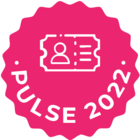Introduction
A successful customer journey doesn’t just happen—it’s built on a well-defined lifecycle that aligns each stage of the journey with specific goals and actions. When lifecycle stages are clear, your team can deliver value at every step, ultimately driving long-term engagement and satisfaction. This article will walk you through identifying the essential stages in Gainsight CS, helping you set up a lifecycle framework that leads customers from onboarding through renewal.
Step 1: Identify the Core Stages of the Lifecycle
To create a cohesive customer journey, start by defining the core stages that each customer will pass through.
-
Onboarding: This initial stage introduces customers to your product, focusing on driving early engagement. During onboarding, your team can use Gainsight's Journey Orchestrator to automate welcome messages and set up key tasks for the customer’s first 30 days.
-
Adoption: Once customers have been onboarded, the goal shifts to deepening their interaction with your product. This stage emphasizes encouraging regular usage and exploring key features. Use Adoption Explorer to monitor feature usage trends and ensure customers are engaging with critical functionalities.
-
Renewal: As customers approach the renewal period, your focus should be on reinforcing the value they’ve gained. Set up automated touchpoints to review achievements and ROI, easing the renewal decision. Use Dashboards to track key engagement metrics and proactively identify any potential renewal barriers.
-
At Risk: If a customer shows signs of disengagement, they enter the At Risk stage. This stage allows for targeted intervention using automated CTAs triggered by declining engagement metrics. Setting up CTAs helps ensure that CSMs are notified early to re-engage these customers and mitigate churn risks.
-
Churned: If a customer leaves, the churned stage provides an opportunity to analyze the reasons behind their departure and refine future strategies. Use Surveys to gather insights on why the customer churned, identifying patterns to improve retention strategies.
Step 2: Align Each Stage with Clear Objectives
Defining specific objectives for each lifecycle stage ensures that your team’s actions are aligned with customer needs and lifecycle progression.
-
Onboarding Objectives: Establish early engagement by ensuring customers complete foundational setup tasks. Use Scorecards to track onboarding milestones and spot any delays early.
-
Adoption Objectives: Maximize feature usage by encouraging customers to explore key functionalities. For example, set up in-app prompts through PX that suggest advanced features when customers hit specific engagement thresholds.
-
Renewal Objectives: Reinforce value to support a smooth renewal. Create renewal playbooks that CSMs can follow to address common renewal concerns and showcase ROI through data collected from Dashboards.
-
At Risk Objectives: Mitigate churn risks through targeted outreach. Use Rules Engine to trigger CTAs when customers show signs of disengagement, allowing CSMs to take timely action.
-
Churned Objectives: Conduct post-churn analysis to identify common reasons for churn. Analyze feedback gathered through Surveys and Timeline data to refine strategies.
Step 3: Map Stages to Customer Segments for Customization
Customizing lifecycle stages by customer segment allows for a more tailored and effective journey.
-
Segment by Customer Size: Enterprise customers often have more complex onboarding needs than SMBs. Use Data Designer to track segment-specific metrics and provide tailored support for each customer type.
-
Segment by Use Case: Adapt lifecycle stages based on customers’ primary use cases. For example, if a customer uses your product primarily for analytics, their Adoption stage can focus on advanced reporting features. Adoption Explorer allows you to customize engagement based on specific feature usage.
-
Segment by Engagement Level: Highly engaged customers may require fewer touchpoints, while less engaged customers might benefit from more hands-on support. Segmenting by engagement level enables your team to adjust interactions accordingly.
Next Steps for Success
With defined lifecycle stages, you’re now set to create a consistent customer journey. Refer to the dedicated article on monitoring lifecycle performance to learn about continuous tracking and optimization techniques that ensure long-term success.
Explore More:
